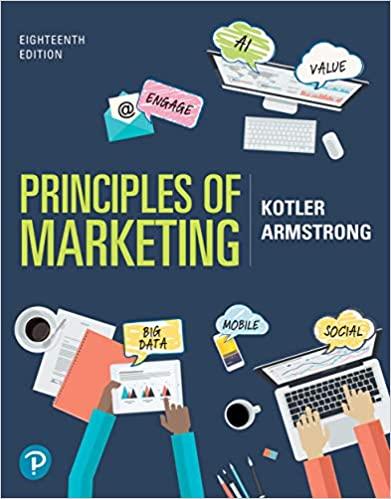Question
Zara: Taking the Lead in Fast-Fashion, Rachel Tiplady, BusinessweekOnline, April 4, 2006. Zara is the flagship brand of the Spanish retail group, Inditex, one of
Zara: Taking the Lead in Fast-Fashion, Rachel Tiplady, BusinessweekOnline, April 4, 2006. Zara is the flagship brand of the Spanish retail group, Inditex, one of the superstars in the fashion retail industry in recent years. In 2005, Inditex reported 21 percent sales growth to $8.51 billion. That puts Inditex ahead of H&M, the world-leading purveyor of cheap-chic apparel, which posted $7.87 billion in sales. Zara has more than 1,000 stores in 31 countries. The fashion industry is a special industry. The products they deal with are highly perishable, and they are susceptible to seasons—gross margin is meaningless if the product does not sell as planned. For many retailers, 35–40 percent of the total merchandise being sold at hefty discount is quite the norm.
Zara contributes around 80 percent of group sales by concentrating on three winning formulas on which to base its fresh fashions: short lead time, lower quantities, and more styles. With an in-house design team based in La Coruna, Spain, and a tightly controlled factory and distribution network, the company says it can take a design from drawing board to store shelf in just two weeks. That lets Zara introduce new items every week, which keeps customers coming back again and again to check out the latest styles. With new styles being developed and introduced frequently, each style would provide only around $200,000–$300,000 of retail sales, a far lower figure than those other retailers or brands, and certainly not “cost-efficient” in terms of design and product development cost.
Moreover, Zara’s success is all the more surprising because at least half of its factories are in Europe, where wages are many times higher than those in Asia and Africa. To maintain its quick inventory turnover, however, the company must reduce shipping time to a minimum. The fast-fashion approach also helps Zara reduce its exposure to fashion fauxpas. The company produces batches of clothing in such small quantities that even if it brings out a design that no one will buy, which happened during an unseasonably warm autumn in 2003, it can cut its losses quickly and move on to another trend. This higher cost of product development, however, is obviously more than adequately compensated by higher realized margins. The result is that Zara discounts only about 18 percent of its product, which is roughly half the level of competitors. Information and communications technology is at the heart of Zara’s business supply chain. Zara’s quick response to the market and its high speed from design table to store shelf are enabled through four critical information-related areas. The first is constant collection of information on customer needs.
Trend information flows daily and is in turn fed into the database at the company’s head office. Zara outfits its store clerks with handheld computers to record sales and customer comments and then integrates the collected data with design, manufacturing, and distribution functions. Designers check the database for these dispatches as well as daily sales numbers, using the information to create new lines and modify existing ones. Thus, designers have access to real-time information when deciding with the commercial team on the fabric, cut, and price points of a new garment. As a result, the company can spot trends early on—a rather critical quantity in fashion retailing—and adjust stock accordingly within days. The second area is the standardization of product information. Different or incomplete specifications and varying product information availability normally add several weeks to a typical retailer’s product design and approval process.
Zara, however, stored the product information with common definitions, allowing it to prepare designs quickly and accurately, with clear-cut manufacturing instructions. The third area is product and inventory management. Its inventory management system is able to manage thousands of fabric and trim specifications, design specifications, and physical inventory, which gives Zara’s team the capability to design a garment with available stocks, rather than having to order material and wait for it to arrive. Zara’s distribution management approach is its final advantage. Its state-of-the-art distribution facility functions with minimal human intervention. Approximately 200 kilometers of underground tracks move merchandise from Zara’s manufacturing plants to the 400-plus chutes that ensure that each order reaches its right destination. Optical reading devices sort out and distribute more than 60,000 items of clothing in an hour. Zara’s merchandise does not waste time waiting for human sorting.
CASE QUESTIONS
1. Discuss the role of SCM in the retail industry. Give examples from the case .
2. Is Zara’s competitive strategy aligned with supply chain strategy? Explain.
3. Discuss the role of Zara’s SCM system. Suggest how it can be improved.
Step by Step Solution
3.31 Rating (166 Votes )
There are 3 Steps involved in it
Step: 1
lets discuss the case questions 1 Role of Supply Chain Management SCM in the Retail Industry Supply Chain Management SCM plays a crucial role in the r...
Get Instant Access to Expert-Tailored Solutions
See step-by-step solutions with expert insights and AI powered tools for academic success
Step: 2

Step: 3

Ace Your Homework with AI
Get the answers you need in no time with our AI-driven, step-by-step assistance
Get Started


